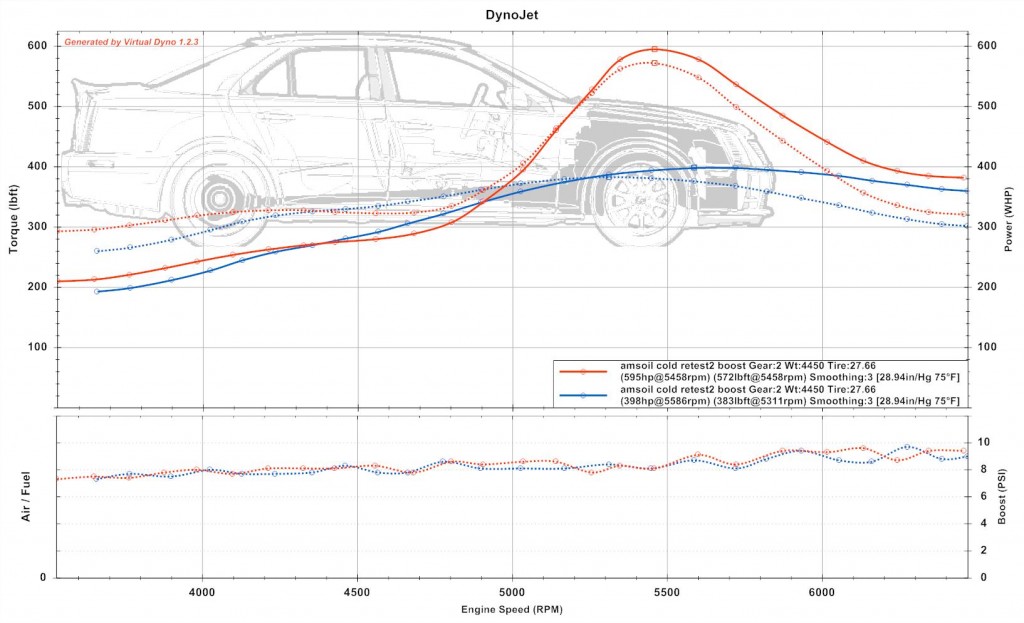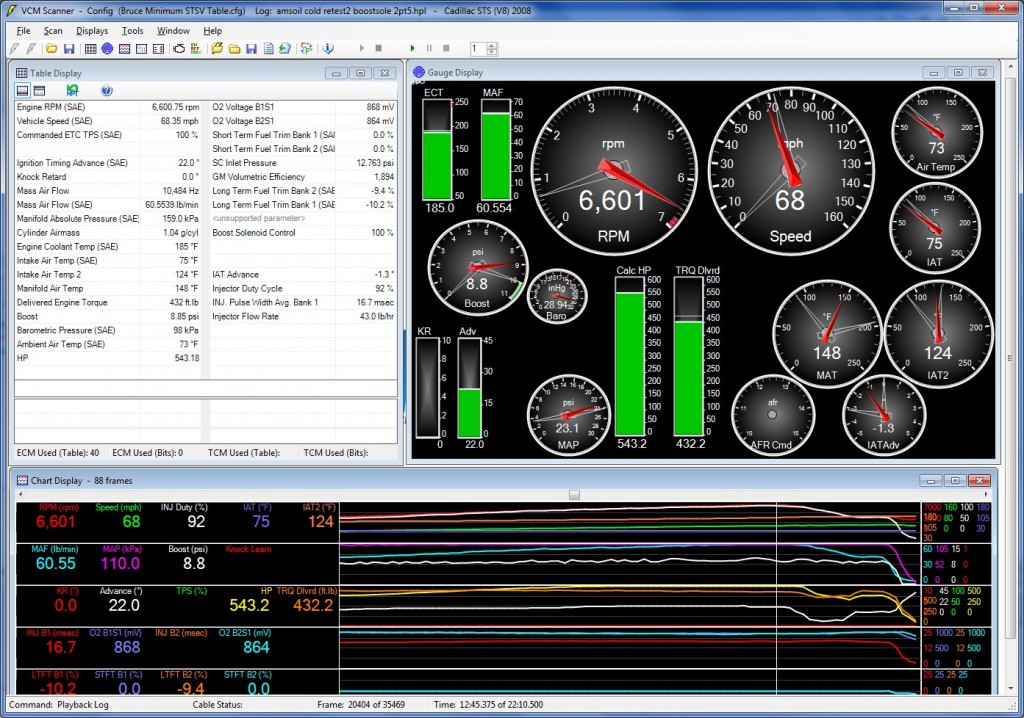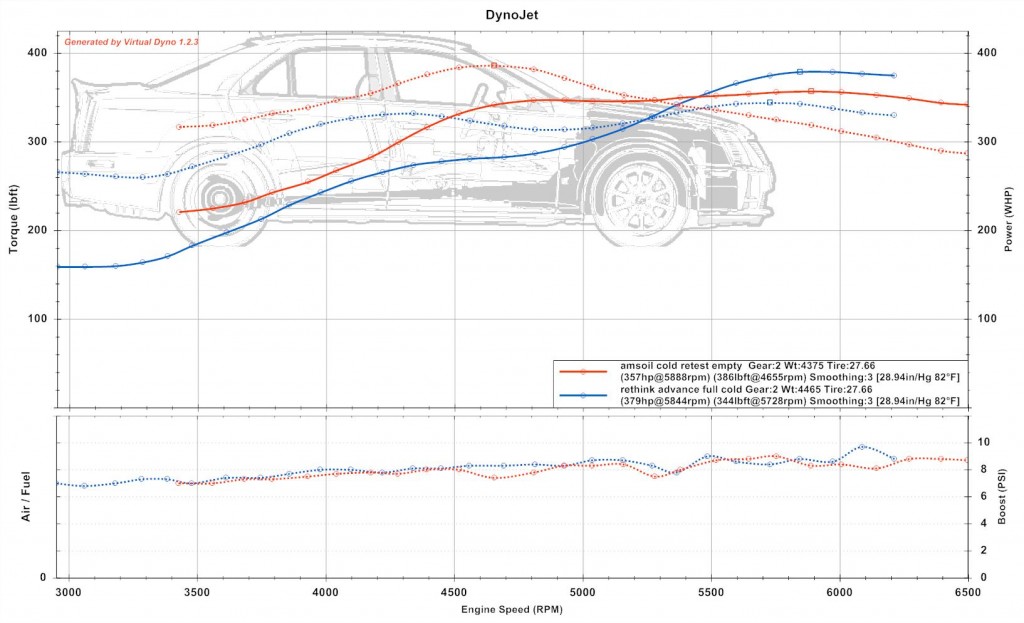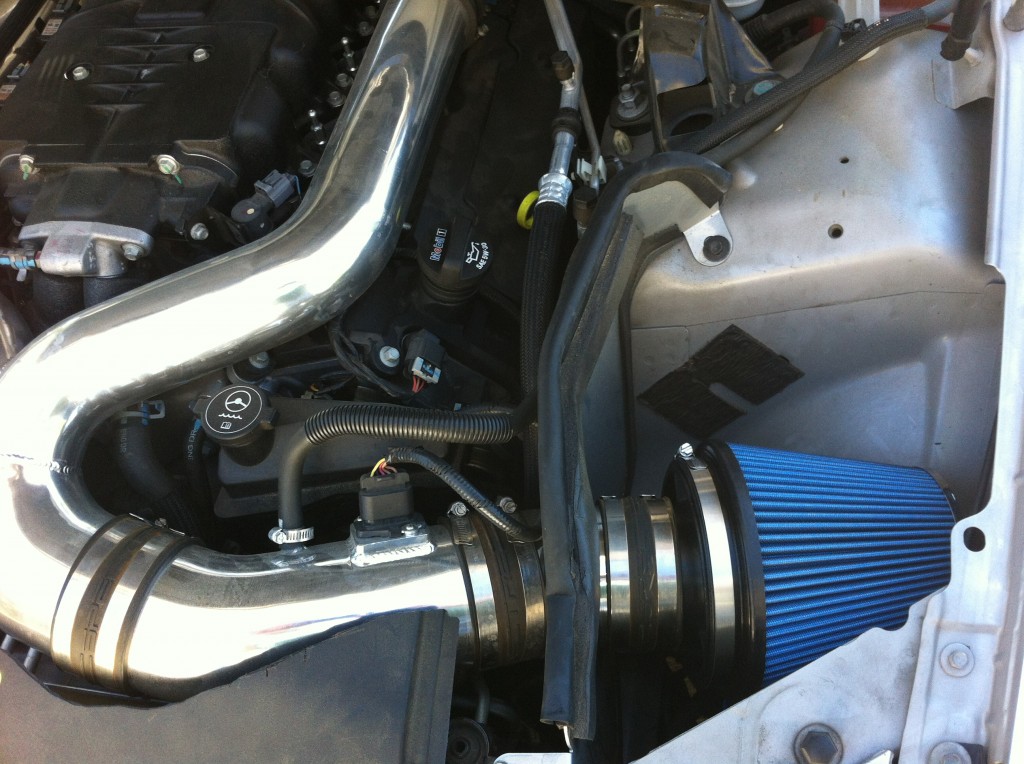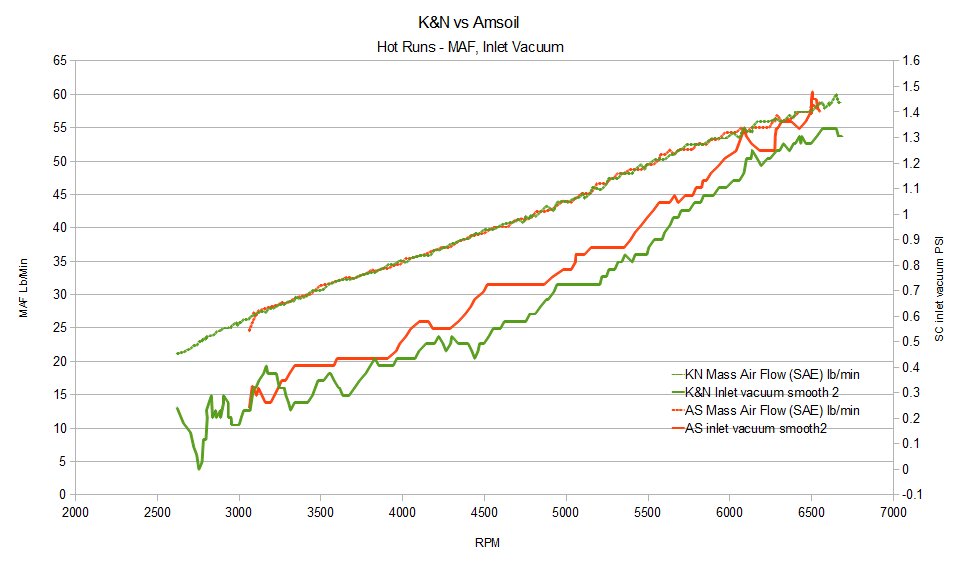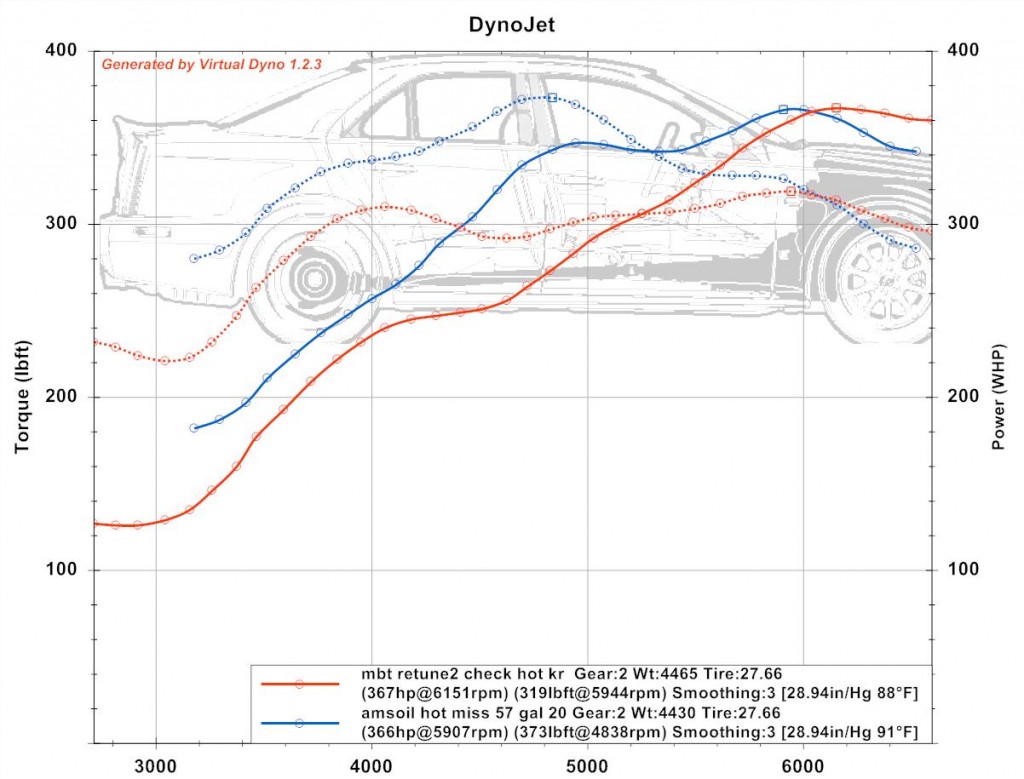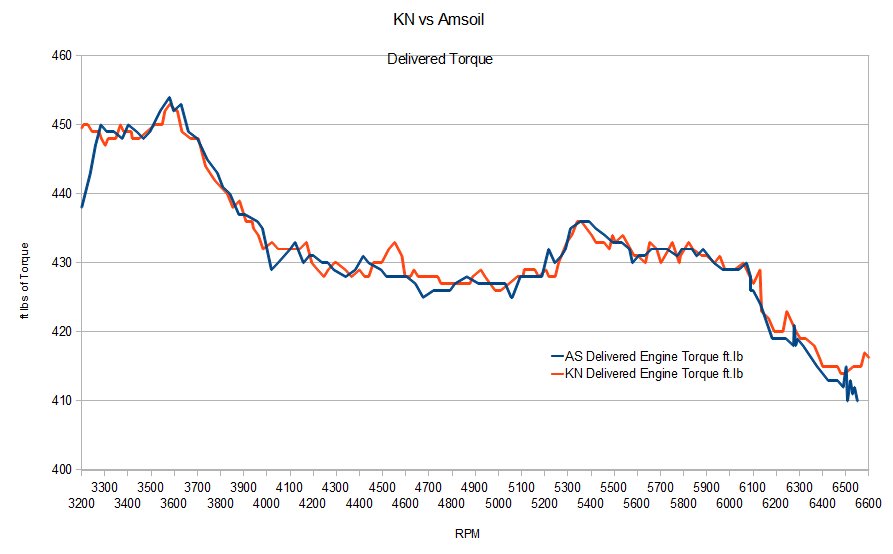Ran another cold test with the Amsoil eaau6065 filter. More odd results from Virtual Dyno — although I see the issue in the data file, I just don’t know what is causing it.
Backstory: I continue to test & tune my 2008 Cadillac STS-V with the 4.4L Supercharged VVT, DOHC V8. Rated from the factory at 469 hp (350 kW; 476 PS) at 6400 rpm, 439 lb·ft (595 N·m) at 3900 rpm. Goal: 440 whp or 550 hp.
and here is a comparison with the previous test results:
Different days, so equivalent given the test method.
Another odd result reflected in Virtual Dyno on the 1st (red) run. I see the issue in the data file but I am uncertain if this reflects a data capture glitch, or an actual phenomena. You can see the same issue in the Hp/Torque graphs above around 5500 rpm. These are x-y graphs, so that divot near 5500 rpm means that the RPM built to 5600, then went back down to 5500, then up through to the shift point — all during wide open throttle. I am unclear what is causing this. The 2nd run at the same day same site is shown in blue; although it also shows a lower RPM hp peak it is much closer to the expected values.
I added a boost solenoid check to see if the boost solenoid was involved in the variance for the boost psi, but the solenoid remains at 100% duty throughout the scan.
Even on this ‘cold’ run, we are running into IAT2 retard of 1.3 degrees at redline, reducing total timing to 22 degrees.
Conclusion:
- Continue to see occasional odd data around 5500.
- Analysis of the delivered torque / hp appears to give a consistent method of determining progress in tuning.
- Run to run variances appear to tie to the boost variances, which suggests that these may be actual changes and not sensor variances.
- Max observed boost 9.7-10 PSI above 6300 RPM
- Max MAF lb/min 60.5-61.5 lb/min
- Injector Duty cycle 90-92%



